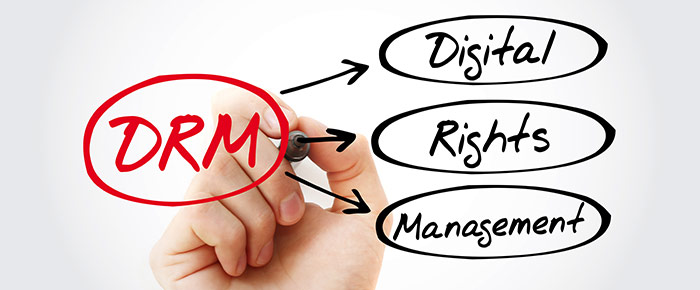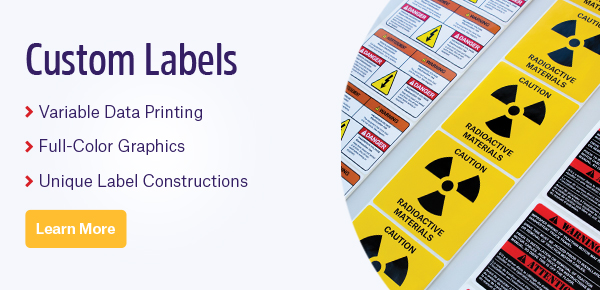 The idea of restricting access to a product is not new; many companies employ various tools and methods to do just that in an attempt to safeguard their investments. One such method that media companies have commonly used to prevent the copying and unlawful distribution of their material is DRM. This is routinely used to protect digital content; however, a printer company, DYMO, has become the first to use it on paper.
The idea of restricting access to a product is not new; many companies employ various tools and methods to do just that in an attempt to safeguard their investments. One such method that media companies have commonly used to prevent the copying and unlawful distribution of their material is DRM. This is routinely used to protect digital content; however, a printer company, DYMO, has become the first to use it on paper.
What is DRM?
DRM is an acronym for digital rights management, which involves limiting the copying and use of copyrighted work and proprietary software. In the digital world, DRM works via encryption of digital media, as has been done for movies, music, software, and even photos.
When it comes to printers, DRM is a relatively new concept. While laser and inkjet printer companies have long required specific ink cartridges and toner manufactured by them to be purchased for their proprietary printers, thermal printers have not had such restrictions as they do not use ink in the traditional sense. However, DYMO has recently implemented a form of DRM using radio-frequency identification (RFID) technology in at least two models, the DYMO 550 and 5XL. The latest iteration of these printers has been re-engineered with built-in RFID sensors that require RFID-embedded label rolls for authentication before they will print. This means that these printers can no longer be used with third-party labels; all labels must be bought from DYMO directly.
How does DRM limit functionality?
To start, it’s worth mentioning that Section 1201 of the Digital Millennium Copyright Act explicitly states that those who attempt to circumvent DRMs may be subject to massive financial penalties. So, if you’ve purchased a printer with DRM capabilities, there are no other labels you can use besides those that the printer manufacturer sells.
While DYMO printers themselves are fairly reasonably priced, their branded labels are typically more expensive than those offered by third-party suppliers. DYMO labels retail for approximately 10$-15$ per roll, while alternatives can be purchased for 2$-5$. In addition, while DYMO extols various benefits of the addition of RFID in their labels, there doesn’t appear to be any need beyond locking out third-party labels.
This is unfortunate for anyone who recently purchased a DYMO printer because many third-party label manufacturers offer customized direct thermal labels, including labels specialized for various harsh working environments. Low temperature labels are essential types of direct thermal labels, as using labels made with adhesives not suited for use and storage in low temperatures risks the label falling off. Furthermore, direct thermal labels will darken completely when exposed to high heat, meaning they are typically unsuitable for high-heat procedures. Recently, several specialized types of DYMO-compatible labels have been created for various unique environments and conditions:
- ZEDCC: ZEDCC labels can withstand low temperature conditions (as low as -196°C/-321°F) as well as temperatures as high as 70°C/158°F. These low-temperature DYMO-compatible labels are also solvent-resistant, withstanding various harsh chemicals and solvents, including short-term immersion in alcohols. This eliminates the need to worry about exposure to disinfecting agents or any incidental spilling of chemicals.
- ZEDY: These multi-purpose DYMO-compatible labels are well suited for general office applications and filling in warehouses. They are available in a range of colors, for color coding or quick visual identification, and are ideal for improving workplace organization.
The reality of DRMs is that DYMO printers (or any other brand of printer) that force you to use only DYMO brand labels will lack the resources to provide labels adapted to the stringent environments of the work site.
What can be done?
The primary factor that needs to be understood is that the bulk of costs associated with any identification strategy resides with the labels, not the printer. The printer is a one-time purchase, and DYMO printers are relatively inexpensive. With that said, if you’ve purchased a DYMO 550 or 5XL printer already, it’s potentially more cost-efficient to simply sell the printer and buy a new one, especially if a high volume of labels is needed over a long period. It is generally much more advantageous to purchase a printer that’s compatible with any and all third-party labels, as this affords maximum flexibility when it comes to label choice, something which is absolutely necessary for industries, like the automotive, electronics, construction, and oil and gas sectors, which regularly require an identification method that withstands heat, strong chemicals, and harsh weather conditions.

